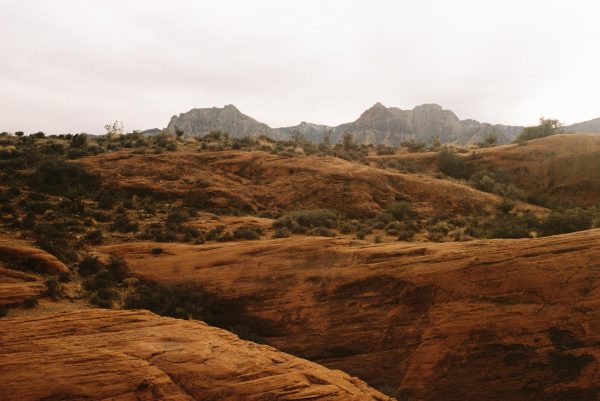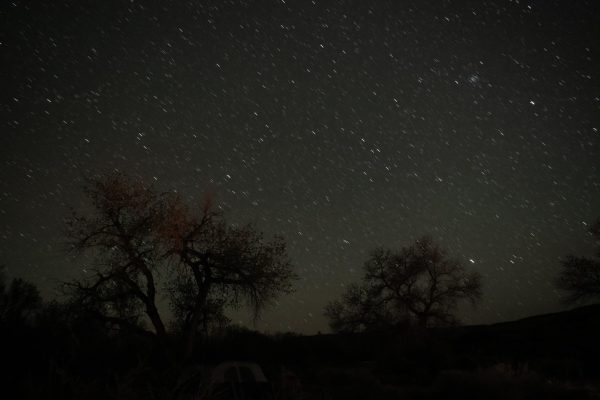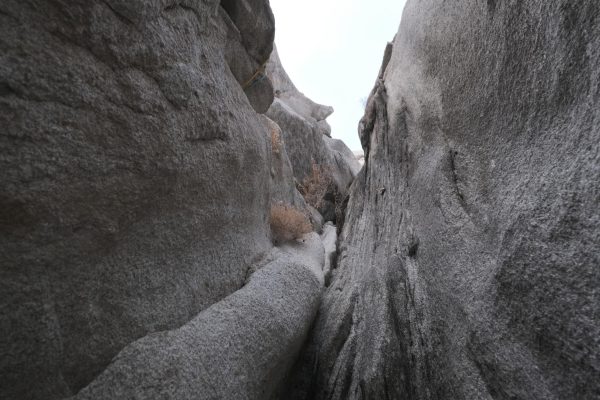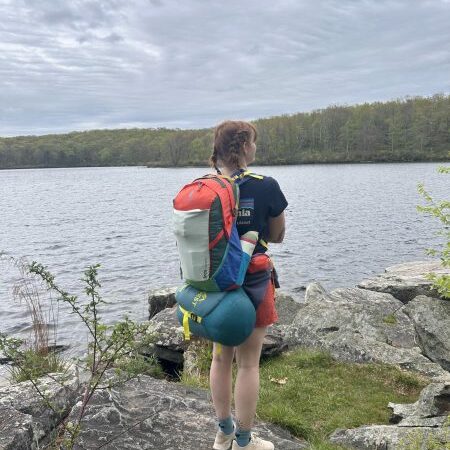Red Rocks Reconciliation
Fingers, chalked and clenched, cling to the rock so fiercely they scream for relief. Wind whips behind me as my right leg shakes uncontrollably, small pebbles falling each time I re-adjust my foot. I’m exhausted from holding myself here, weary from imagining every possible way to fall. In my nervousness, I forget my assured safety at the anchors, not trusting the strength of the fixed gear I’m attached to. Instead, my mind spins irrationally in a whirl of panic.
The screw gates on my carabiners are locked. I checked twice. Didn’t I? Am I sure I attached my PAS to my harness correctly before climbing? Yes. Yes, I checked all of that.
“Breathe, Eliza,” I tell myself. In and out, I focus on giving my lungs room to be lungs, but my exhales become increasingly ragged with each breath, and soon enough a wave of fear breaks over me. I’m trembling, rendered inconsolable.
Why isn’t the rope sitting correctly in the mussy hooks? I don’t know how to make it look right, but I know it doesn’t look how my climbing partner said it would. What if I can’t figure out how to fix it? How am I supposed to get down? I’m sixty feet in the air, hanging from two tiny pieces of metal bolted into some random slab of rock in Nevada. What am I doing?
If you can’t tell by now, my first week-long climbing trip was not at all what I expected.

What surprised me most was not the unanticipated 30 mph winds which ravaged our campsite the first couple days, threatening to snap the poles of our tent with each powerful gust. Nor was it the sudden and unanticipated shower of rain which slowly dampened the sandstone as it dampened our morale. It wasn’t the plethora of college climbing clubs from around the country sprawled over every crag, or the fact that despite my best efforts, three of my locking carabiners simply wouldn’t unscrew when I finally found myself at the anchors of a difficult climb.
These factors, though inconvenient, are just normal parts of a climbing trip——expected even. You can prepare as much as you want for inopportune weather, crowded crags and failing gear, but ultimately you just have to accept that these factors aren’t things you can control.
The biggest surprise for me wasn’t any of these external factors, but rather my internal reaction to the adversity I experienced.
Despite being in a beautiful place with supportive and patient friends, each time I got on the rock I found a new reason to doubt myself: a new reason to question my ability and identity as a climber.
Sometimes I focused too heavily on the grade of a climb, beating myself up for projecting a route my friends chose as their warm-up. Other times, difficult beta made me believe I simply wasn’t strong enough to get up a route, leading me to give up instead of finding other beta that worked. Throughout the week, I got frustrated with myself for feeling scared on top rope, shied away from going for big moves because falling outside felt way more intense than falling in the gym, and felt really shaken up after taking my first whips on real rock. I got unnecessarily nervous while cleaning a route, and then watched myself become increasingly nervous when things went wrong. Crying often on the rock, I couldn’t reconcile my poor performance with the reality I’d envisioned.
Each day I tied in, I couldn’t help but wonder where my progress from the last two years of climbing had gone. It seemed practically nonexistent, my confidence and competence dissipating into the air like dust from chalked-up hands. Surprised and embarrassed, I left on the last day with a sour taste in my mouth, feeling I’d failed.

What happened?
I wish I could say that in the past couple weeks since returning home I’ve reached some grand conclusion about what I experienced, working through the disappointments of the trip by writing some motivational narrative about how my time in Nevada parallels the ups and downs of life.
I tried that actually. Wrote a few paragraphs about how route reading is kind of like life reading. But, after looking at it for a while, I realized that isn’t the story I’m trying to tell.
Sometimes, life’s arc isn’t straightforward or cinematic. Sometimes, what you experience isn’t obviously instructive or inherently meaningful. Sometimes, things really do just suck.
And as much as I hate to admit it, I don’t think there’s anything wrong with that. This first trip to Red Rocks wasn’t what I wanted it to be. I wasn’t what I wanted to be.
And you know what?
I’m still climbing.

The post Red Rocks Reconciliation appeared first on Wasatch Magazine.





